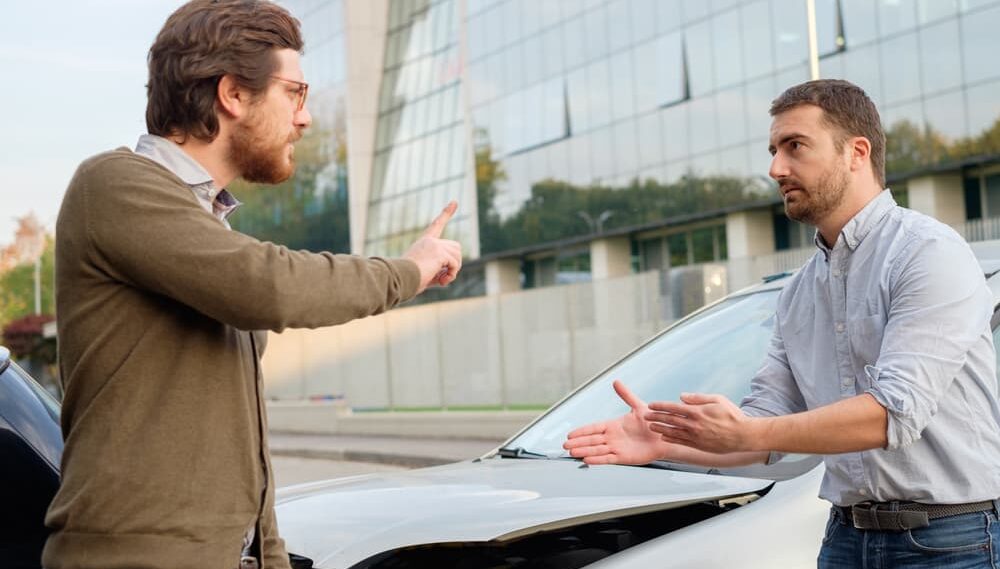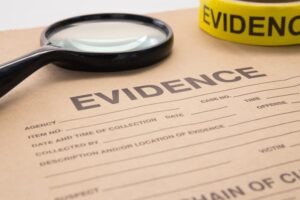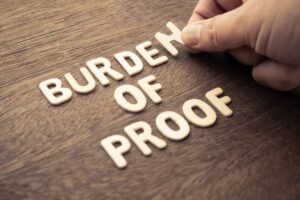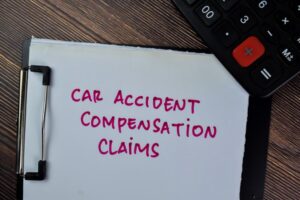
There are two steps to every car accident claim. First, you must prove that another driver was to blame for the accident, and then insurance companies will begin to talk settlement with you. Sometimes, they may dispute liability, whereas other times, they may try to blame you for part of the accident to reduce your compensation.
Contact an experienced car accident attorney immediately after the accident or you may lose your ability to prove fault. If you wait too long, you may have a weaker case, resulting in less or no compensation. Seek a free consultation with a car accident lawyer to discuss who you can hold liable for your injuries.
A Driver May Not Admit Fault No Matter What
Not every driver will admit they were at fault for the car accident because they know the legal ramifications when they accept responsibility for their actions. They may try to evade accountability for what they did, pin the blame on you, and get compensation for themselves.
Drivers may find themselves in a truth contest after a car accident, where each one tells their side of the story. If they remain deadlocked, neither can seek total compensation for the accident. It is up to you to break the stalemate when the other driver tells a different story.
You Must Prove That the Other Driver Was Negligent in Your Case
No matter what type of car accident is at issue, the legal standard to get a settlement check is always the same. Another driver involved in the crash will assume a responsibility to pay you when you can prove that they were negligent.
It is not a given that you can prove the other driver, or any driver, was negligent in a car accident. You only prove negligence when you come to the table with proof showing what happened and what the other driver did.
Common Forms of Driver Negligence in Car Accidents

Driver negligence is a leading cause of car accidents, contributing to a significant number of injuries and fatalities on the roads. Understanding the common forms of driver negligence is crucial for promoting safer driving practices and reducing the frequency of accidents.
One common form of negligence is distracted driving. With the widespread use of smartphones, drivers often engage in activities like texting, calling, or browsing while behind the wheel, diverting their attention from the road. This lack of focus significantly increases the risk of collisions.
Additionally, activities such as eating, adjusting the radio, or interacting with passengers can also lead to distracted driving.
Speeding is another common form of driver negligence that contributes to accidents. Exceeding posted speed limits or driving too fast for road conditions reduces a driver’s ability to react to unexpected situations, increasing the likelihood of a collision and the severity of resulting injuries.
Failure to obey traffic signals and signs is a third form of negligence. Running red lights, ignoring stop signs, or disregarding other traffic regulations can lead to dangerous intersections and increase the chances of accidents. Failing to yield the right of way is also a frequent cause of collisions, especially at intersections or when merging onto highways.
Driving under the influence of alcohol or drugs is a severe form of negligence with severe consequences. Impaired judgment, slowed reaction times, and impaired coordination significantly elevate the risk of accidents, often resulting in devastating outcomes.
Lastly, reckless driving encompasses a range of negligent behaviors such as aggressive driving, tailgating, and weaving in and out of traffic. Such behaviors not only endanger the driver but also put other road users at risk.
Sometimes, another driver’s negligence is obvious to everyone involved and law enforcement officers who report to the scene. However, negligence and fault are not always straightforward, and you might wonder who should be responsible for your injuries and losses.
In either situation, consult a car accident attorney as soon as possible so they can assess your options.
What You Need to Prove to Demonstrate Negligence
Negligence is a particular legal term used in a personal injury case and represents a four-part test that is a prerequisite for financial compensation. You must prove that the driver is liable to you for your injuries by showing that each test element applies in your case.
Here are the individual elements of the negligence test that you must prove to win a car accident case:
- The other driver owed you a duty of care – each driver owes a duty of care to those around them on the road, even if they are only in the vicinity for seconds.
- The driver did something that an ordinary driver would not have done under the circumstances – this is often the most challenging part of the negligence test to prove since you must show what happened to cause the accident.
- You suffered an injury to your person or property.
- You would not have suffered an injury had it not been for the other driver’s careless actions.
Examples of Negligence in a Car Accident Case
The following are examples of things that reasonable drivers do not do behind the wheel:
- Change lanes without checking their blind spots
- Rear-end vehicles in front of them because they were following too closely
- Hit other cars because the driver was distracted and did not see someone around them
- Lose control of their vehicle because they were speeding or driving recklessly
- Operate their car when they are drunk or under the influence of drugs
- Run stop signs or red lights and otherwise fail to yield the right of way
You Need Evidence to Back Up Your Claim

Your word only counts for so much in any personal injury case, and unfortunately, in a car accident case, your word counts for next to nothing. Insurance companies will not believe you because doing so means paying you for your injuries.
You can only demonstrate that someone else was negligent by bringing specific proof to the table of what the other driver did during the accident.
Remember, in most cases, the mere fact that the accident happened is insufficient to merit financial compensation, and you must prove fault before you can receive a settlement offer and start to negotiate.
Further, more than speculation is needed to prove your car accident case, and you need to meet a specific burden of proof to prove negligence. You do not have to prove the other driver’s negligence with 100 percent certainty; that obligation lies with the lawyer prosecuting the case.
You Must Carry Your Burden of Proof

In a car accident case, the law requires that you prove what the other driver did by a preponderance of the evidence. The fact that this standard is lower than a criminal case does not mean you have an easy path ahead.
The law still dictates that you show that the facts you allege are more likely than not to have occurred, and you must carry your burden of proof no matter what.
How can you demonstrate what the other driver did when you did not see what happened before the accident? It is complicated to investigate and prove any car accident case.
You are not a lawyer by training, and you do not know what insurance companies or juries look for when reviewing an accident case. Moreover, you may lack the time and resources to focus on an investigation and gather evidence.
You Have a Limited Amount of Time to Build Your Case
The proof you need for your accident is only available for a fleeting amount of time, and you must take advantage of the window of opportunity to gather evidence to come away with a settlement check.
You need to move quickly, not necessarily because you will miss the statute of limitations but because you will lose valuable evidence to prove your case.
The Insurance Company Can Try to Blame You
One problem that you may have is when insurance companies claim that you were partially at fault for the accident. They may do this because they can reduce the money they must pay you.
It is up to you to defend yourself from these accusations, and you may have to prove what you did before the accident and demonstrate what the other driver did. Remember, the insurance company does not have the last word in your case, and the jury always makes the final decision if you go to court.
How a Car Accident Lawyer Can Help You Prove Fault
The perfect solution is to hire an experienced professional whose primary focus is you when you must deal with other things.
A car accident lawyer has the time, skill, and capacity to get to work immediately when you cannot focus on the legal process. Your case will get more challenging if you do not call promptly after the accident because each passing day makes it more difficult for you to prove fault.
Your car accident lawyer will launch an investigation of your car accident to prove that someone else was to blame for your injuries. Time is of the essence here because you can lose evidence as weeks pass.
Examples of Helpful Car Accident Evidence
There are several sources of evidence that you may include with your claim or will present in court.
These include:
- Statements from witnesses who saw the accident (and the insurance company will contact them to hear what they have to say – this is usually the most persuasive form of evidence in a car accident case)
- Pictures from the scene of the accident
- Photos of the damage to the cars
- Testimony from an accident reconstruction expert
- The police report (included only with a claim and not in a lawsuit)
Hopefully, you will obtain at least one of these sources of evidence to prove your case. Otherwise, you will be unable to win your case.
Securing Adequate Compensation After Your Car Accident Injury

The discussion will turn to financial compensation once you prove liability in the car accident. The other driver must pay for the total damages you have suffered, and the insurance company takes on that obligation to compensate you up to the amount of the policy limit.
If the other driver did not have enough insurance, you will file a claim with your underinsured motorist coverage.
Insurance companies always resist paying you the amount you deserve; their initial settlement offer is often for a fraction of your claim. After your attorney rejects the initial settlement offer, they will respond to the insurance company, which usually takes the form of a demand letter formally stating what you deserve.
When Your Car Accident Case May Go to Trial
Your car accident claim will likely settle to avoid litigation.
However, there are three reasons why you will take your case to trial:
- The insurance company outright denies your claim because it believes you do not have sufficient proof showing the other driver was to blame for the accident.
- The insurance company will not offer you enough in a settlement agreement, and there is little hope of reaching a settlement agreement.
- The insurance company is wrongfully blaming you for part of the accident, which has the effect of cutting your compensation.
Your attorney will advise you on strategy in your case and may believe it is best to start by filing a claim with the insurance company. They will also tell you if and when they think you should take your case to court or whether you should accept the settlement offered.
You Do Not Have to Pay a Car Accident Lawyer Upfront

Bakersfield Car Accident Attorney, Mickey Fine
You do not need to come up with money for an attorney to get started on your case.
If you are concerned about how you will pay for a lawyer, you only owe your attorney money if you win your case. Your attorney receives payment from the proceeds of your case, and you do not pay them at all if you do not get any settlement money or jury award. Contact a personal injury law firm in Bakersfield without delay to pursue your case legally.
